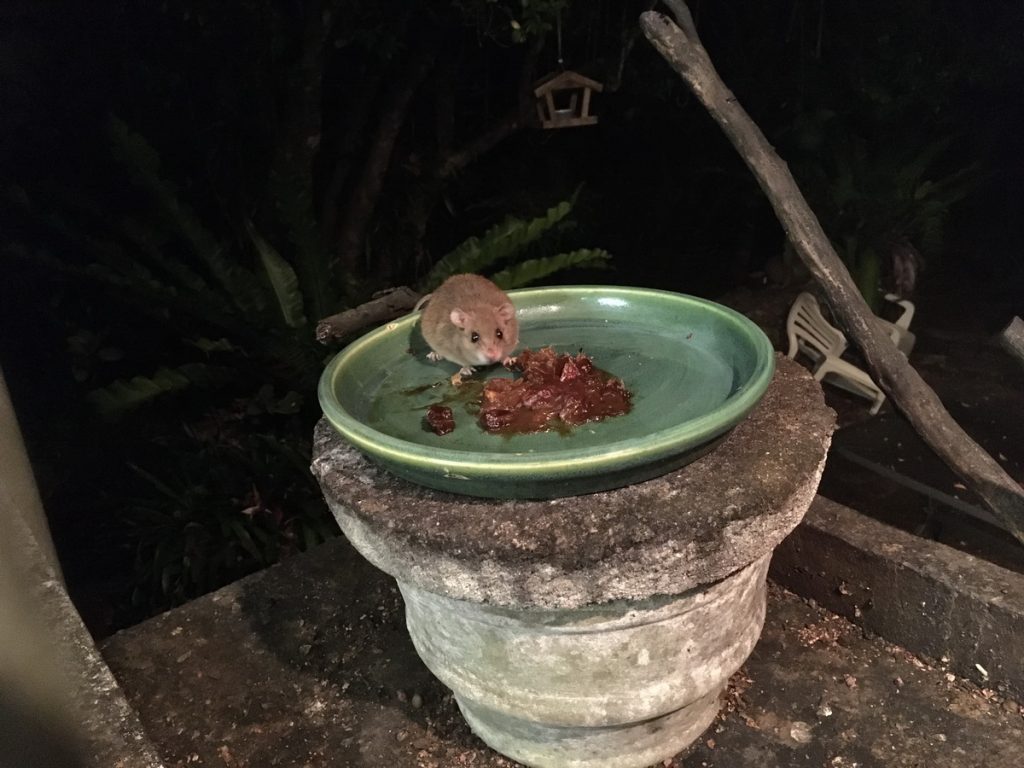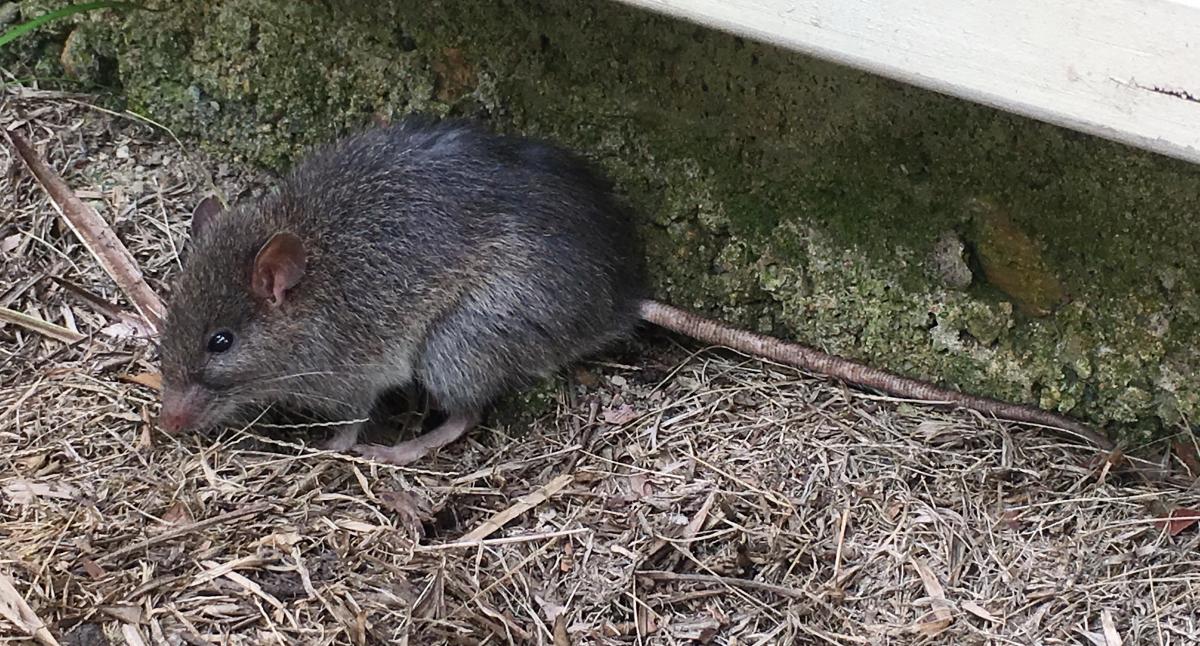Late last Friday night when I went to turn out the lights before bed I noticed some movement in our bird feeder and realised that we had a nocturnal thief chowing down on some leftover mashed dates. I have often noticed distinct non-bird droppings in the feeder when cleaning out the dish and had suspected a native rat was the culprit; and I was right. Here it is looking quite at home and not at all concerned about my iPhone sticking out the louvre window at him.

Its nice to see one of our native mammals as they are not easily spotted unless you get out at night with a spotlight in your garden or on the tracks, where bandicoots and pademelons are regulars.
While this is clearly a rat, I am not at all confident what species it is. However the possibilities are not that large. To my understanding there are basically 3 species of native rat that are common in the rainforest around Paluma (and no non-native ones thank goodness). The white-tailed rat that wreaks havoc with local garbage bins can be eliminated based on size and tail colour. The video above shows that tail is uniform and brownish grey, and it’s not nearly big enough for a white-tailed rat. That leaves the Bush Rat (Rattus fuscipes) or the Fawn-footed Melomys (Melomys cervinipes). My guess is that this is the Fawn-footed Melomys. The Bush Rat tends not to climb as much as the Melomys (its a bit tricky getting up to our feeder) and it also has a fairly distinctive pattern of circular ridges on its tail (see photo below of a Bush Rat) that I could not see in the albeit soft focused video. Perhaps someone can offer a more knowledgeable identification?

Text and photos by Jamie Oliver

Hi Jamie. I have also observed these cute fellows on my verandah at night. I also catch them in the act of thieving left-overs from the bird feeder! Thanks to your post I now know what they are. Yes, those big brown eyes are very distinctive and impressive.
Melomys. My favourite small mammal here.
Hi Jamie, Definitely a Melomys. The beautiful brown eyes are the give away. Must catch up when I’m next in Paluma as I think we may have started Marine Biology at JCU back in 1975. Take care. Kind regards Cam Mackenzie (past Principal of Paluma EEC)